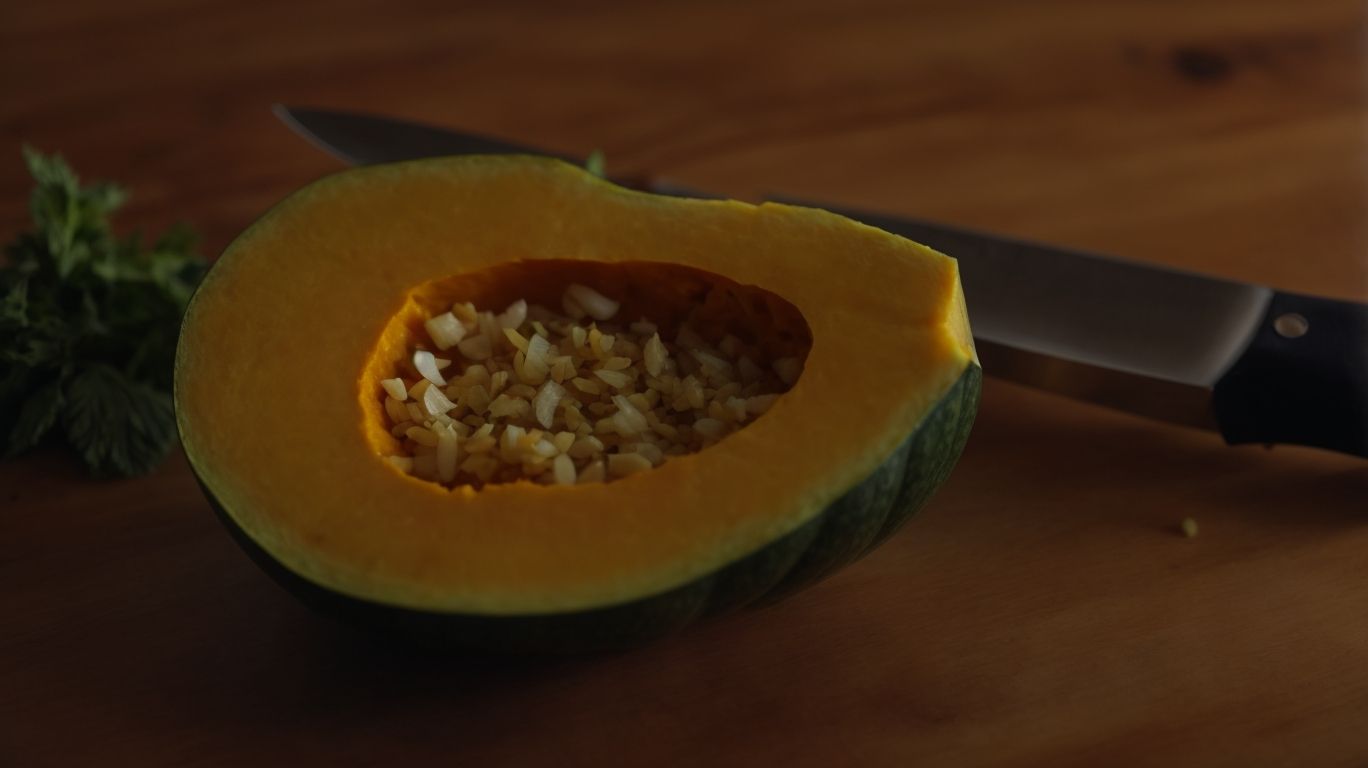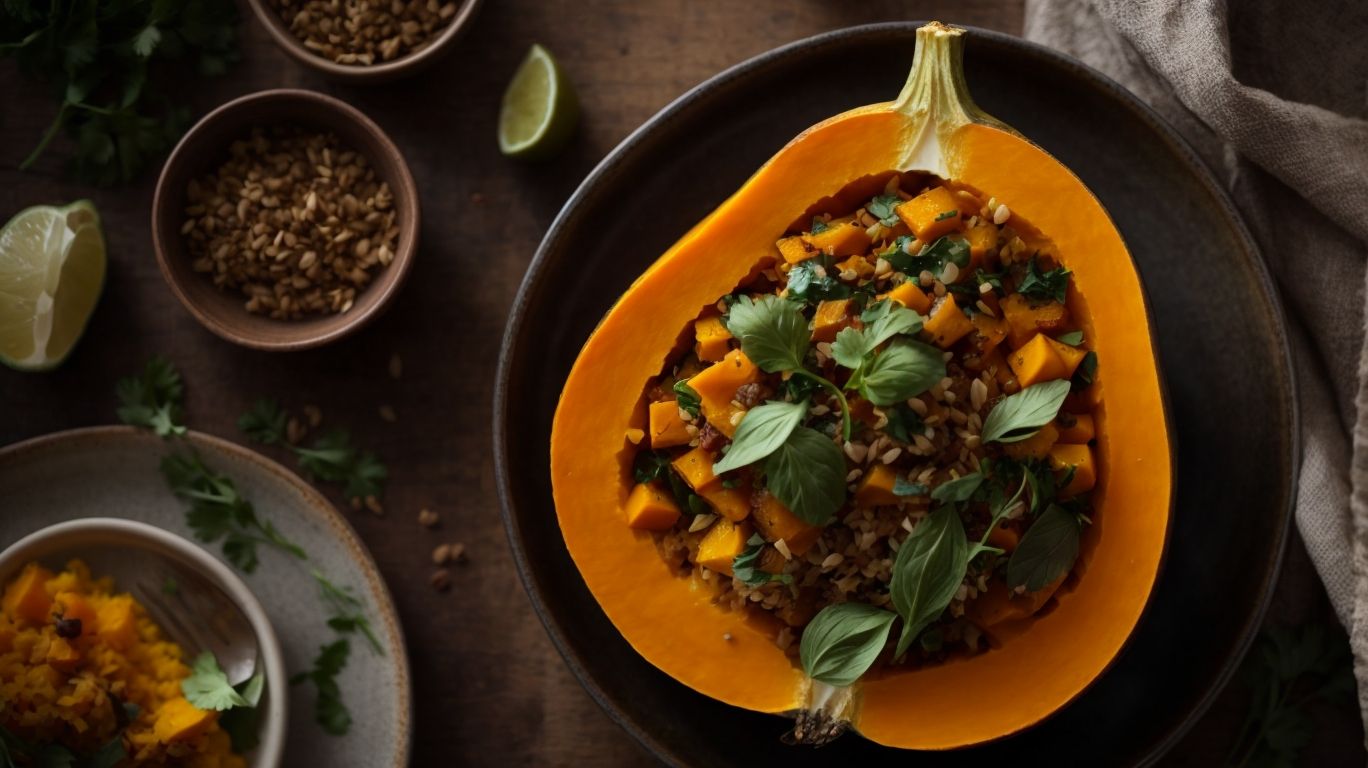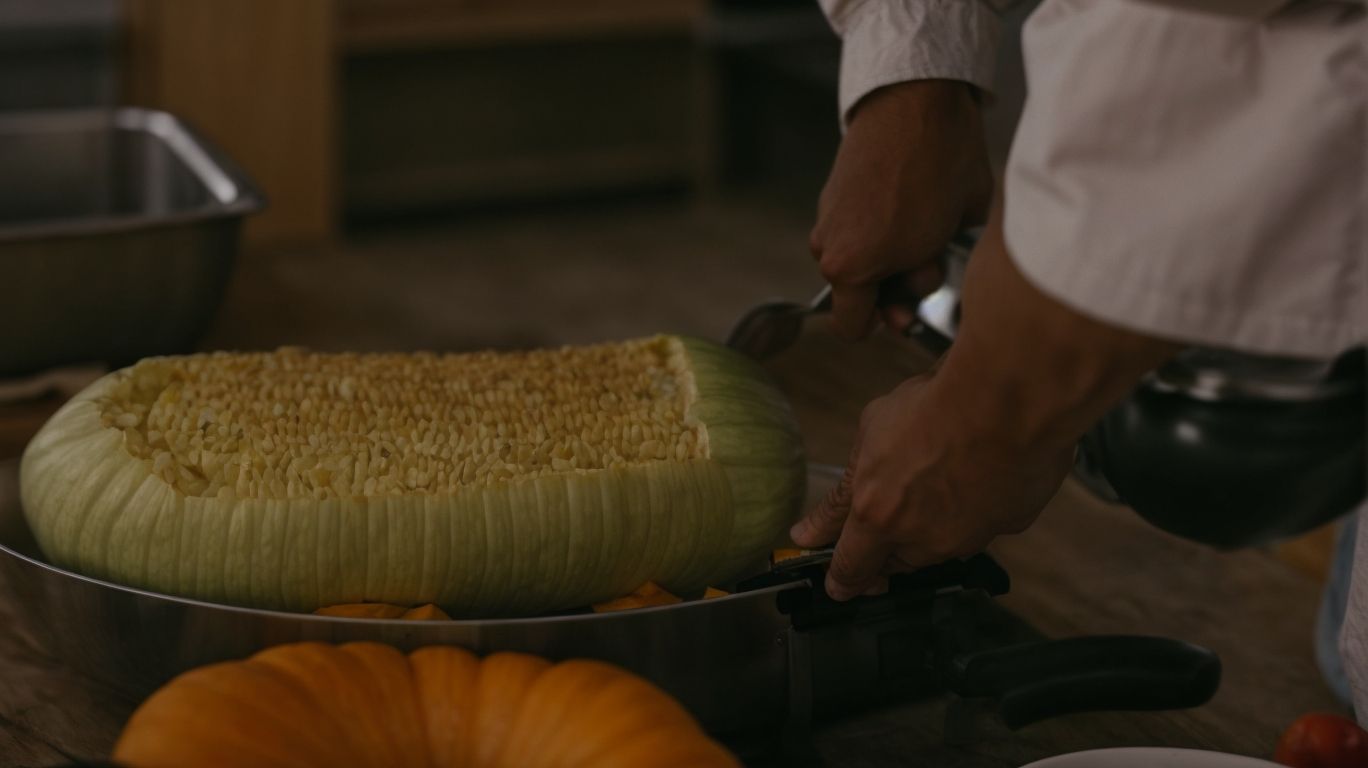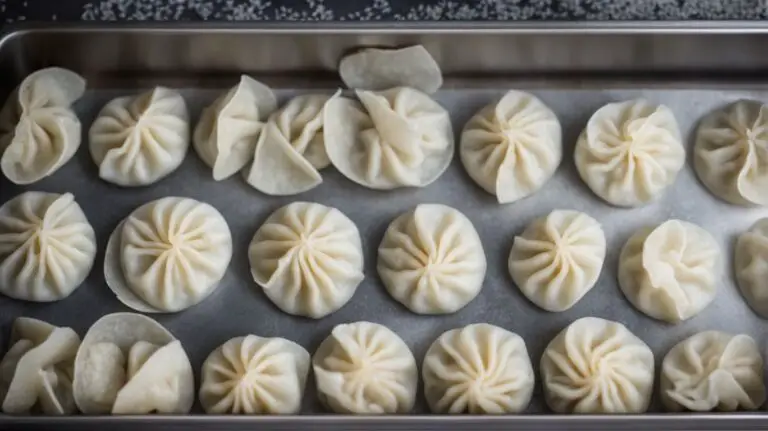How to Cook Kabocha Squash?
Looking to add a new ingredient to your cooking repertoire?
Discover everything you need to know about Kabocha Squash – from where to buy, choosing the perfect one, and storing it.
Learn different methods for preparing and cooking Kabocha Squash, along with delicious dishes you can make using this versatile ingredient.
Elevate your culinary skills with Kabocha Squash!
Key Takeaways:
What is Kabocha Squash?
Kabocha Squash, also known as Japanese Pumpkin, is a flavorful winter squash variety that is commonly used in recipes due to its rich texture and unique flavor.
This vibrant vegetable is versatile in the kitchen, lending itself well to both savory and sweet dishes. When cooked, Kabocha Squash develops a velvety texture that works beautifully in soups, stews, curries, and even baked goods. Its natural sweetness pairs wonderfully with warming spices such as cinnamon, nutmeg, and ginger, making it a perfect ingredient for comforting autumn dishes. Roasting is a popular cooking method that enhances the squash’s natural sweetness, while steaming preserves its tender texture. Kabocha Squash can also be mashed or pureed to create creamy soups or smooth fillings for pies and tarts.
Where to Buy Kabocha Squash?
Kabocha Squash can be purchased at local grocery stores, farmer’s markets, and specialty food stores that offer a variety of winter squash options.
When selecting Kabocha Squash, look for ones that are heavy for their size, with a hard rind and no soft spots. The color should be a deep green with lighter, almost white stripes or bumps. In terms of seasonal availability, you can typically find Kabocha Squash in the fall and winter months, with peak freshness from September through December.
For the freshest and most flavorful Kabocha Squash, consider buying from local farmer’s markets where you can often meet the growers and learn about their cultivation practices. This not only supports small-scale agriculture but also ensures that you are getting a product that is sustainably produced and potentially organic.
How to Choose the Perfect Kabocha Squash?
Selecting the perfect Kabocha Squash involves examining its skin for firmness, checking for any soft spots, and ensuring a deep green color that indicates freshness.
A ripe Kabocha should feel heavy for its size, which is a sign of juiciness and density. Look for a dull, rather than shiny, skin that shows maturity. It should also have a hard, tough rind that is free of blemishes. If you gently press the skin, it should not leave a dent.
How to Store Kabocha Squash?
To store Kabocha Squash, keep it in a cool, dry place away from direct sunlight, ensuring proper ventilation to maintain its freshness and extend its shelf life.
It is recommended to store Kabocha Squash in a pantry or cellar where the temperature ranges between 50-68°F (10-20°C) to prevent premature spoilage. Avoid refrigerating whole Kabocha Squash as exposure to cold temperatures can degrade its texture and flavor.
Moisture is the enemy when it comes to storing squash, so make sure to place it in a breathable container or perforated bag to prevent mold growth.
How to Prepare Kabocha Squash for Cooking?

Credits: Poormet.Com – Steven Rodriguez
Preparing Kabocha Squash for cooking involves washing the exterior, cutting it with a sharp knife, removing the seeds, and optionally peeling it based on the preferred method of preparation.
Start by rinsing the Kabocha Squash under cold water to remove any dirt or debris. A vegetable brush can help scrub the skin thoroughly. Once cleaned, carefully slice through the squash with a sharp chef’s knife. Take caution with the tough skin and flesh. To remove the seeds, scoop them out using a spoon or an ice cream scoop, ensuring to scrape the stringy bits off the interior walls.
If you prefer the texture of the skin in your dish, leaving it unpeeled can enhance the visual appeal and nutritional value. If peeling is desired, using a sturdy peeler or a sharp knife can make the task easier. Peel the skin off in sections, following the natural curves of the squash.
Peeling vs Non-Peeling Method
When preparing Kabocha Squash, you can choose between peeling or non-peeling methods, with the decision influenced by personal preference, texture preferences, and considerations for autoimmune issues.
Peeling Kabocha Squash removes the tough outer skin, which can be challenging to cut through. This method can result in a smoother texture after cooking, as the skin can sometimes get tough. Peeling can be time-consuming and may lead to some nutrient loss.
On the other hand, keeping the skin on during cooking can enhance the flavor and retains more nutrients, but it may result in a slightly firmer texture compared to peeled squash. It’s important to wash the skin thoroughly before cooking to remove any dirt or residue. From a health perspective, leaving the skin on can provide additional fiber and nutrients, particularly in the form of antioxidants that are concentrated in the skin.
How to Cut Kabocha Squash?
Cutting Kabocha Squash requires a sharp knife to slice through its tough skin and dense flesh, ensuring careful handling to avoid accidents and achieve uniform pieces for cooking.
When selecting a knife for this task, a sturdy chef’s knife is recommended due to its wide blade and strong edge. Start by placing the Kabocha squash on a stable surface, securing it with one hand while holding the knife with the other.
- Begin by carefully slicing off the top and bottom of the squash to create a stable base. Next, using a rocking motion, slowly guide the knife down the sides, following the curvature of the squash, applying firm pressure to make clean, even cuts. To achieve consistent pieces, ensure that each slice is of similar thickness.
This method not only ensures uniform cooking but also enhances the presentation of your dish. Remember to always keep your fingers and hands clear of the cutting path to prevent any mishaps. With practice, mastering the art of cutting Kabocha squash will become second nature in your culinary adventures!
How to Cook Kabocha Squash?
Cooking Kabocha Squash can be done using various methods such as roasting, steaming, sautéing, or microwaving, each offering unique textures and flavors to enhance your dishes.
Roasting Kabocha Squash brings out its natural sweetness and caramelizes the edges, creating a deliciously tender interior. Steaming this squash helps retain its shape and nutrients while producing a soft, velvety texture. Sautéing the Kabocha adds a nice caramelized exterior with a slightly firmer bite. The microwave method is a quick option, ideal for when you need a speedy preparation without compromising the flavor. Each technique alters the squash’s characteristics, offering a versatile ingredient for various recipes.
Roasting Method
Roasting Kabocha Squash in the oven is a popular method that enhances its natural sweetness and caramelizes the edges, creating a rich and flavorful side dish.
When preparing this delectable dish, it’s crucial to begin by preheating your oven to 375°F for that perfect balance of tenderness and crispness. Once your squash is halved and deseeded, a drizzle of olive oil, a sprinkle of salt and pepper, and perhaps a touch of smoked paprika can accentuate its already delicious flavors. Placing the squash cut-side down on a baking sheet ensures even cooking and those delightful caramelized edges that reflect the squash’s inherent sweetness.
Steaming Method
Steaming Kabocha Squash is a gentle cooking method that preserves its delicate texture and subtle flavor, making it an excellent choice for lighter preparations and salads.
By steaming Kabocha Squash, you ensure that the natural sweetness of the squash is retained, creating a dish that is both healthy and delicious. This method also helps to maintain the vibrant color of the squash, enhancing the visual appeal of your dish. Steaming is a simple and quick cooking technique that requires minimal preparation and equipment, making it convenient for busy days. The gentle nature of steaming ensures that the squash cooks evenly without losing its moisture, resulting in a tender and flavorful outcome.
Sautéing Method
Sautéing Kabocha Squash in a pan with olive oil, salt, and pepper creates a quick and flavorful dish with a caramelized exterior and tender interior, ideal for incorporating into pasta or grain bowls.
When sautéing Kabocha Squash, it’s important to keep the heat at a medium-high level for the perfect caramelization without overcooking the squash. The olive oil helps in achieving a nice sear while enhancing the natural sweetness of the squash. The salt and pepper not only season the squash but also contribute to the overall depth of flavors.
To elevate the dish, you can add a sprinkle of crumbled feta or a dash of balsamic glaze after sautéing, creating a delightful contrast to the sweetness of the squash. Another option is to pair the sautéed Kabocha Squash with fresh herbs like thyme or rosemary for added aroma and complexity.
Microwaving Method
Microwaving Kabocha Squash is a quick and convenient cooking technique that softens the flesh for easy mashing or incorporation into recipes, saving time while preserving its natural flavor.
When microwaving Kabocha Squash, start by washing the squash thoroughly and cutting it in half, removing the seeds with a spoon. Place the halves in a microwave-safe dish, cut side down. Be sure to pierce the skin with a fork to allow steam to escape during cooking. Microwave on high for about 10-12 minutes, or until the flesh is tender to the touch.
Once cooked, let the squash cool before scooping out the softened flesh. This versatile ingredient can be used in various recipes such as soups, stews, curries, or even pies. Its sweet and nutty flavor pairs well with spices like cinnamon, ginger, and nutmeg.
What Dishes Can You Make with Kabocha Squash?

Credits: Poormet.Com – Austin Gonzalez
Kabocha Squash is versatile and can be used to create a wide range of dishes such as Kabocha Squash Soup, Kabocha Squash Curry, Kabocha Squash Salad, and Kabocha Squash Risotto, each showcasing its unique flavor and texture.
For a comforting Kabocha Squash Soup, start by roasting the squash until tender, then blend it with vegetable broth, coconut milk, and warming spices like cinnamon and nutmeg. Serve topped with a dollop of Greek yogurt and fresh herbs for a luxurious finish.
To make a fragrant Kabocha Squash Curry, sauté onions, garlic, and ginger, then add cubed squash, coconut milk, curry powder, and tomatoes. Simmer until the flavors meld and serve over steamed rice.
In a vibrant Kabocha Squash Salad, combine roasted squash with mixed greens, toasted nuts, dried fruit, and a tangy vinaigrette. Sprinkle with crumbled feta cheese for a delightful contrast of flavors.
For a creamy Kabocha Squash Risotto, cook Arborio rice with sautéed shallots, white wine, and diced squash until creamy and al dente. Finish with a sprinkle of Parmesan cheese and fresh parsley for a gourmet touch.
Kabocha Squash Soup
Kabocha Squash Soup is a comforting and velvety dish that combines the sweetness of roasted Kabocha Squash with aromatic spices and a creamy texture, perfect for chilly evenings.
Starting with the base of this soup, the key ingredients typically include onions, garlic, and vegetable broth to enhance the depth of flavors. After roasting the Kabocha Squash until it’s tender, it’s pureed to create that smooth consistency that warms you up from the inside out. Adding a touch of ginger and a hint of cumin further elevates the taste profile of this delightful soup.
Kabocha Squash Curry
Kabocha Squash Curry is a fragrant and hearty dish that marries the earthy sweetness of Kabocha Squash with aromatic spices, coconut milk, and tender vegetables, creating a satisfying meal with layers of flavor.
The key to a delicious Kabocha Squash Curry lies in the combination of spices such as cumin, coriander, turmeric, and garam masala, which infuse the dish with warmth and depth.
Start by sautéing onions, garlic, and ginger in a pot until fragrant, then add the Kabocha Squash, allowing it to slightly caramelize before pouring in rich coconut milk to simmer and meld the flavors together.
For a perfect balance of sweetness and heat, a touch of jaggery or brown sugar paired with red chili flakes can be added, enhancing the complexity of the dish.
Serve the Kabocha Squash Curry over steamed basmati rice, garnished with fresh cilantro and a squeeze of lime for a burst of freshness that complements the robustness of the curry.
Kabocha Squash Salad
Kabocha Squash Salad is a refreshing and vibrant dish that features roasted Kabocha Squash slices on a bed of greens, garnished with fresh scallions and drizzled with a zesty sesame ginger dressing, making it a delightful side dish for any meal.
The roasting technique for the Kabocha Squash involves cutting the squash into wedges, tossing them in olive oil, and seasoning with a sprinkle of sea salt and cracked black pepper before roasting until they caramelize and turn tender. This process enhances the natural sweetness and inherent nutty flavor of the squash, creating a perfect contrast to the crisp greens. Assembling the salad involves arranging the warm squash slices on a bed of mixed greens, spinach, and arugula for a vibrant mix of colors and textures.
Kabocha Squash Risotto
Kabocha Squash Risotto is a creamy and indulgent dish that combines the rich flavors of Kabocha Squash with Arborio rice, Parmesan cheese, and aromatic herbs, creating a luxurious and satisfying meal for special occasions.
To start preparing this delectable dish, begin by dicing the Kabocha squash into small, bite-sized pieces and sautéing them in a pot with some olive oil until they are slightly caramelized and tender, enhancing their natural sweetness.
In a separate saucepan, bring chicken or vegetable broth to a simmer, keeping it warm throughout the cooking process to gradually add to the risotto.
Next, in a large skillet, toast the Arborio rice until it becomes slightly translucent around the edges, adding in finely chopped shallots or onions to infuse the base with savory depth.
Conclusion

Credits: Poormet.Com – Kenneth Nelson
In conclusion, Kabocha Squash is a versatile and delicious ingredient that can elevate a wide range of dishes with its unique texture and rich flavor profile, making it a culinary favorite for both home cooks and professional chefs.
Its sweet, nutty flavor is accentuated when roasted or pureed in soups, stews, and curries. The vibrant orange flesh and thin, edible skin of Kabocha Squash enhance not only the visual appeal of dishes but also contribute to their nutritional value. Known for its creamy consistency when cooked, this winter squash is widely used in Japanese cuisine, particularly in tempura, salads, and even desserts. The growing appreciation for diverse ingredients in global cooking has led to more innovative ways of incorporating Kabocha Squash into contemporary recipes, showcasing its adaptability across various culinary traditions.





